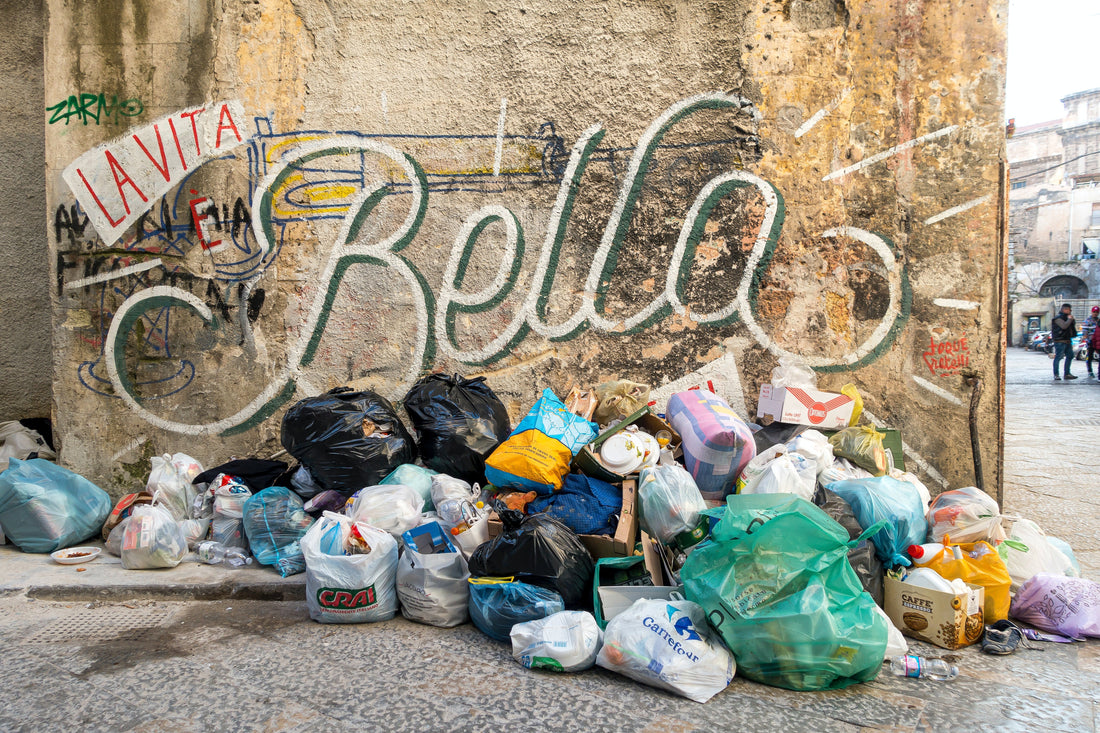Household and beauty products have become a staple. Yes, food is important, but joining the 'must-have' ranks, are the other consumables we use every day, like cleaning solutions and hygiene /beauty routine products. Could we do without lotion? Probably, but do we want to?
Science and convenience have brought us to an era of endless options. Options are great, they allow us to feel like we are in control of our purchases. However, how far are we willing to go to seek this feeling of control. Going as far as piling on the burden of material goods in our home? Going as far as taking advantage of and hurting our only earth?
There has to be another way. A way for us to continue to be able to keep our houses clean and beautiful, a way to take care of our bodies with the amazing products science has brought us. A way for us to consume, while reducing the total amount of things we purchase. A way for us to consume, while trying to reuse what we already have. A way for us to consume, while refilling our consumables without hurting our earth.
According to the EPA, in the U.S., 14 million tons of plastic packaging are produced each year. Packaging, short-use plastics like cleaning and beauty containers make up 42% of the plastic production and use. These stats should come as no surprise when in the U.S. household cleaners sales were 4.4 billion in 2020 and beauty products were 49.2 billion. This is a lot of consumption and a lot of plastic waste.
Many people think "well thank goodness for recycling. I will buy this product because I need it and make sure it's put in the recycling bin when I am done". However, the reality of our recycling system is quite the opposite, especially when it comes to plastic. Sadly, 91% of plastic isn't even recycled. That means of all the billions of sales and all the tons of plastic packaging, only 9% gets recycled! So, the rest of the plastic goes to the landfills, makes its way to our oceans, or gets littered the ground.

If you care about our earth, and if you want to leave a healthy clean earth for future generations, hearing these daunting figures has to make you think "we have to do better." Does it make you want to be a part of the solution?
But where do you start? Now let's be honest, a good majority of our plastic problem must be fixed from the top down. Meaning, large corporations must be held accountable for the absurd amount of waste they produce, and they should create products and product packaging that don't harm and pollute our earth. However, we also play a major role. Our money is our vote. If we keep purchasing from companies that don't care about plastic packaging, they will keep selling plastic products and plastic packaging. We must consume responsibly, with intention, and drive the markets to reflect what we want for our earth.
With the statistics laid out above, one can see, even though recycling is important, it's not the most effective way to save the environment. According to the U.S. EPA, reduce and reuse are the most effective ways to help the environment.
The notion of REDUCING must come first in our efforts to save the environment. Reducing our consumption to reduce our footprint, changing the patterns of consumerism, forcing corporations to rethink their footprint. Taking a closer look at how much we purchase, buying only things we truly need, and only purchasing things that will bring value to our life.
After evaluating our role in how and how much we consume, we can then look to REUSING and REFILLING. A great way to reduce waste is to not create waste in the first place. You can help do your part by reusing the things we already have or the things someone else is no longer using. Lower waste and plastic on our earth by reusing bottles, jars, pouches, bags. We can also refill our consumable products. Instead of purchasing new goods new containers every time, refill existing containers, which will reduce waste and our overall carbon footprint.
Making reducing, reusing, and refilling an integral part of your consumption cycle can make a huge impact. Not only in your production of waste, but in changing the very fabric of consumerism, changing industries, and holding corporations to a new standard. Each effort adds up.....your effort is important.
Photo by Etienne Girardet on Unsplash
Photo by Antoine GIRET on Unsplash

